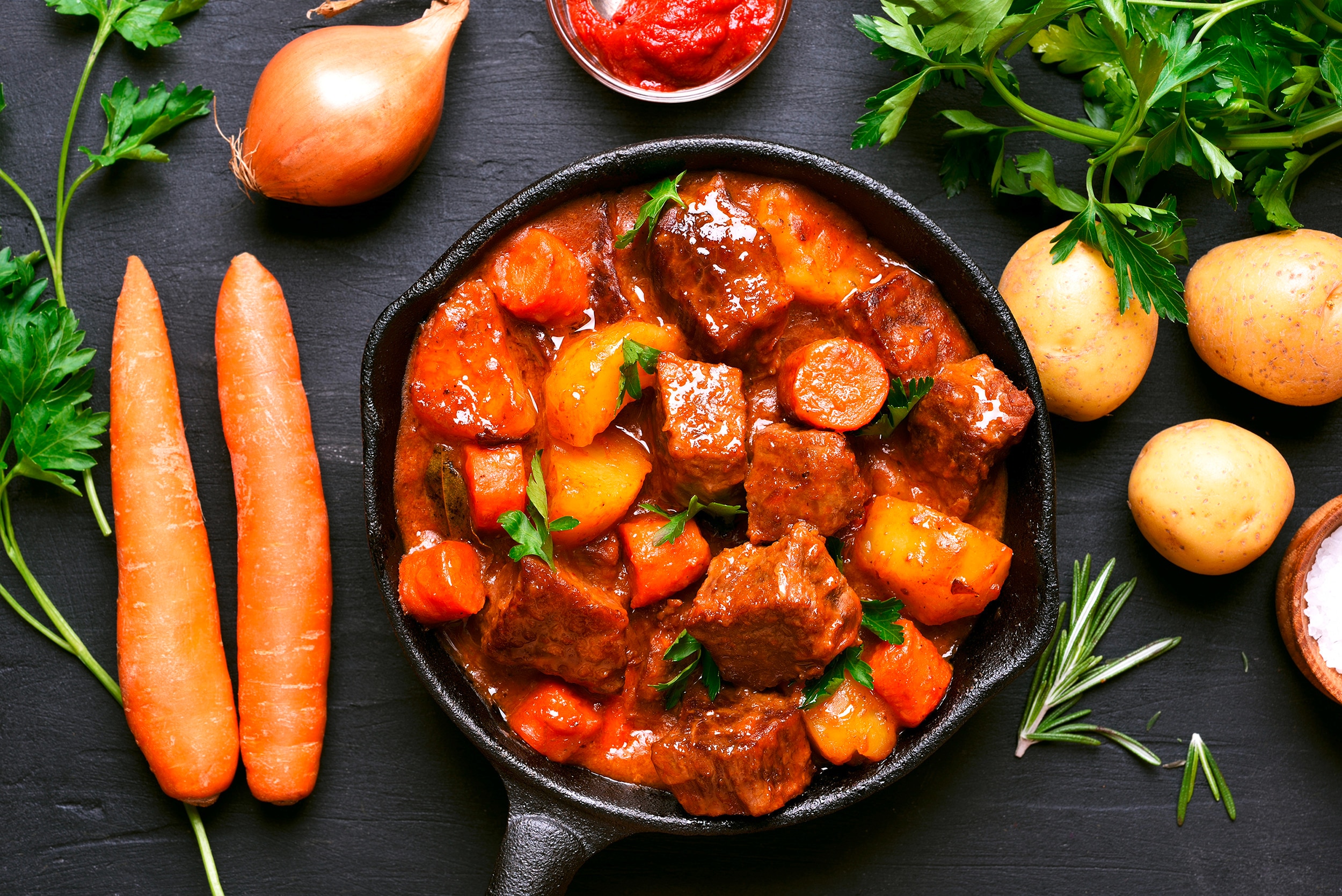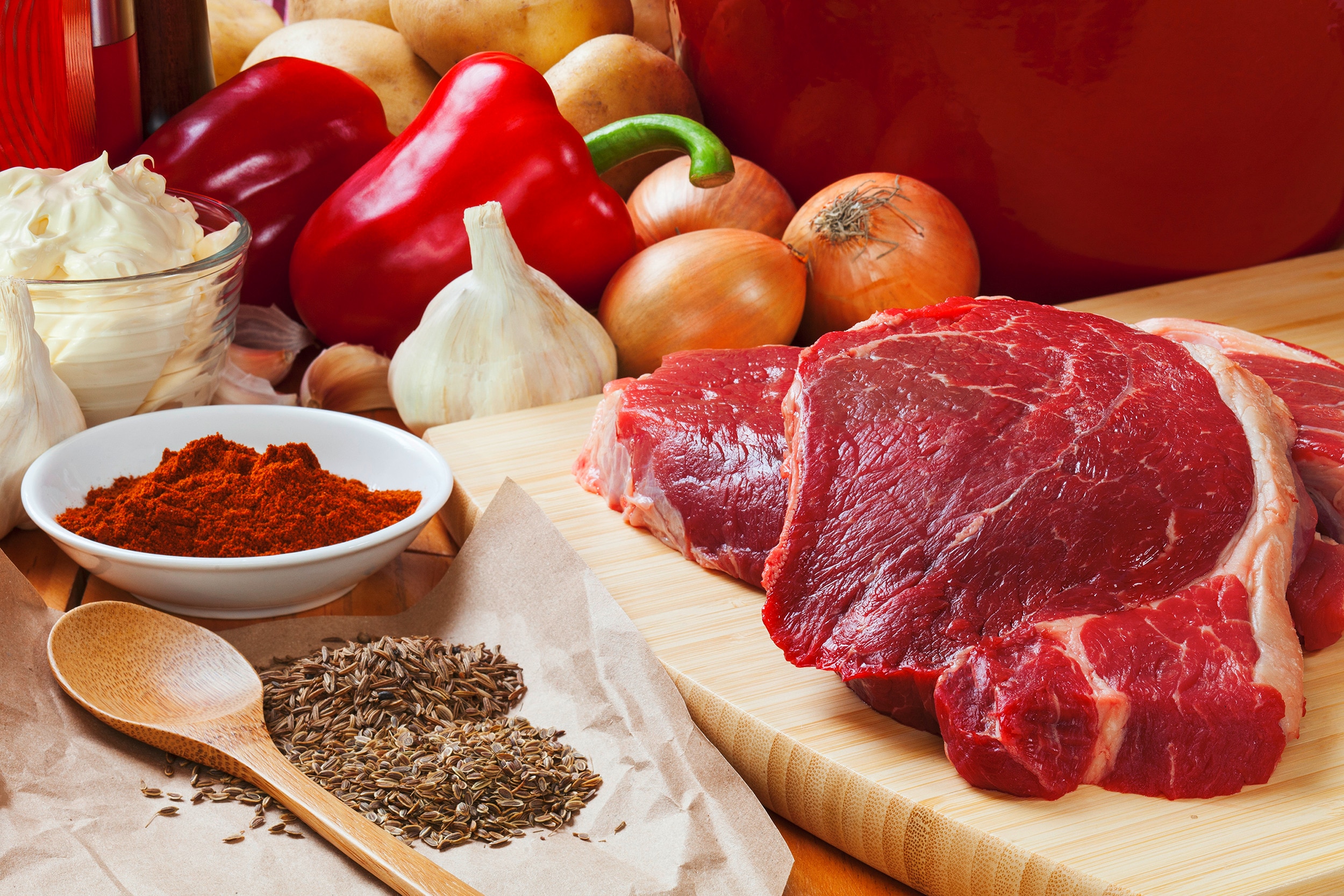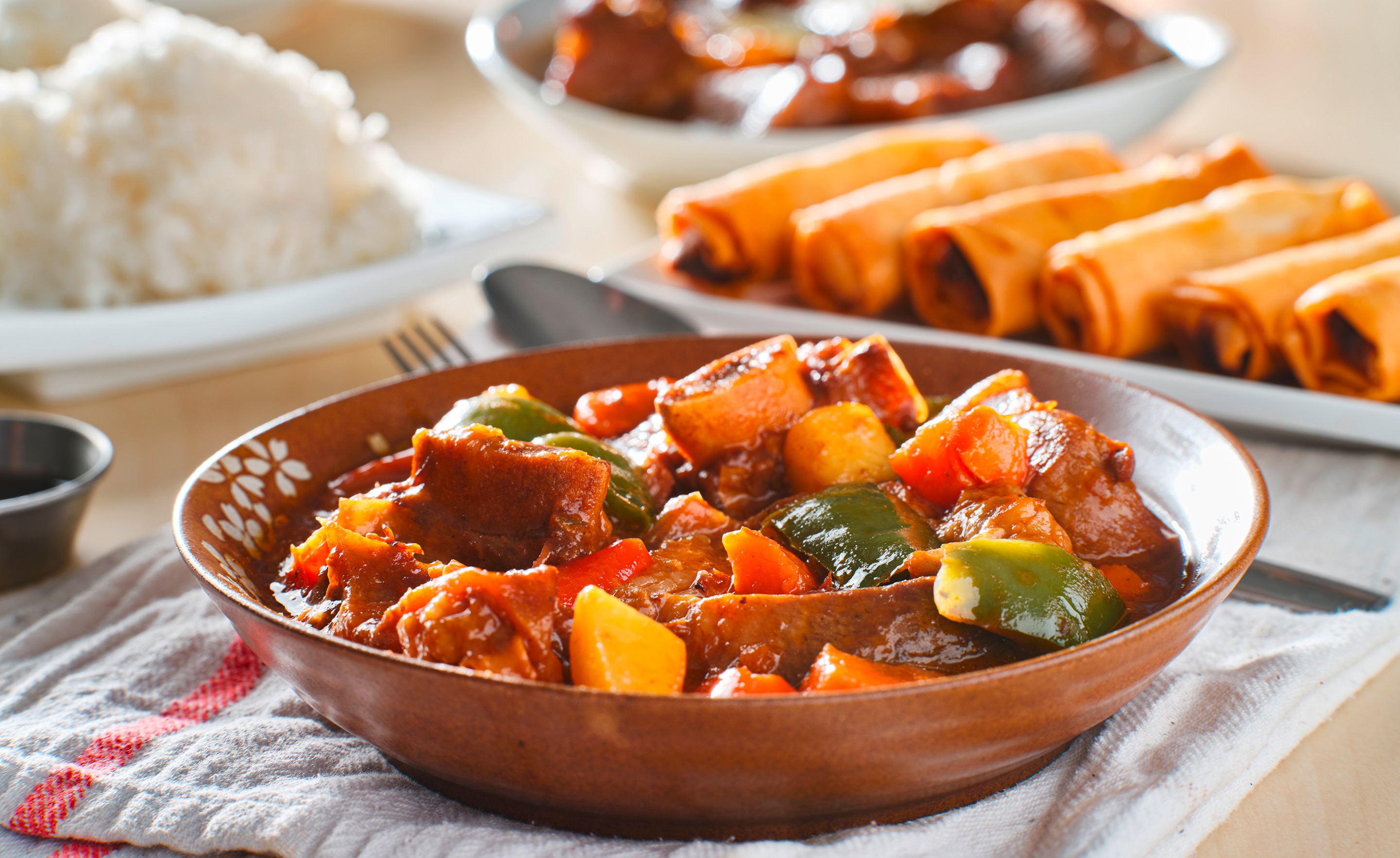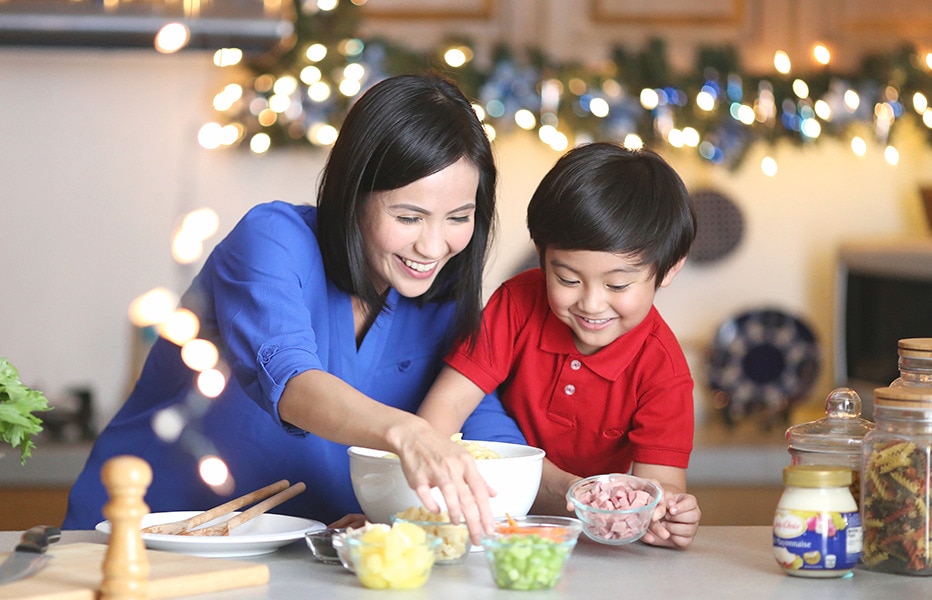A Very Merry Beef Caldereta Recipe
Share to facebook Opens in new window
Most Filipino households have a go-to beef caldereta recipe. Some families even treat it as a culinary heirloom passed down through generations. In local cuisine, caldereta is more than just a hearty stew. Since it’s a mainstay at fiestas, holiday parties, and other festivities, it’s become a symbol of celebration and community.
What makes caldereta an ulam fit for special occasions? Ultimately, it’s a labor of love. One of the first things you realize when learning to cook calderetang baka is how long it takes. You need to simmer the meat for hours until it’s fork-tender. It also requires a lot of prep, especially if you want your veggies to cook evenly.
Achieve the right balance of flavors by tasting as you go. That’s how you guarantee lots of umami, richness, and a hint of spice in every bite. Some home cooks have also discovered the magic of adding mayonnaise to caldereta for surprising creaminess. Try it in this recipe and find out just how well this little trick works!
Classic Beef Caldereta Recipe With a Creamy Twist

Like other similar Filipino stews, beef caldereta ingredients are often pantry staples. The dish relies on spices and flavorful sauces to elevate its simple components. Feel free to adjust this list to your liking! If you love heat, double the chilies and keep the seeds in. You can also add bouillon cubes for a meatier taste. Find more suggestions for tasty add-ons below.
Ingredients
- 1 tbsp oil
- 1 kg beef brisket, cut into 2-inch cubes
- 1 pc onion, chopped
- 4 cloves garlic, chopped
- 1 tbsp tomato paste
- 2 liters water
- 2 pcs bay leaves
- 1 tsp black peppercorns
- 1 cup tomato sauce
- 2 tbsps liver spread
- 3 tbsps soy sauce
- 1 tbsp brown sugar
- 1 pc bird’s eye chili
- 1 pc green bell pepper, sliced
- 2 pcs red bell peppers, sliced
- 1 pc potato, cut into large cubes
- 1 pc carrot, cut into large cubes
- ½ cup green peas
- 3 tbsps Lady’s Choice Real Mayonnaise
Method
- Heat oil in a pan over high heat. Fry beef just until browned. Do not overcrowd the pan. Set aside.
- In the same pan over medium heat, sauté onions for 1 minute. Add garlic and sauté for another minute.
- Add tomato paste and cook for 2 minutes. Add browned beef brisket.
- Add water, bay leaves, and pepper. Cover, bring to a boil, and simmer for 2½ to 3 hours over low heat. The remaining broth should be around 2 cups.
- Add tomato sauce, liver spread, soy sauce, brown sugar, and chili. Mix well, then simmer for a few minutes.
- Add bell peppers, potatoes, carrots, and green peas. Simmer for 20 minutes or until the sauce is thick and the vegetables are cooked.
- Add Lady’s Choice Real Mayonnaise and mix well. Serve hot.
Extra Ingredients to Elevate Your Caldereta

Are you looking for more ways to upgrade your creamy beef caldereta recipe? If you have some extra pesos, you can try these swaps and additions. They’ll take your dish from good to great!
Premium beef cuts
The best beef parts for caldereta include chuck, sirloin, and short ribs. They're tough, lean cuts with a bit of fat and lots of connective tissues. These work well for stewing because the proteins in their tissues turn into gelatin that makes the beef tender.
Of the three, short ribs would be the priciest. But they’re worth the splurge for their ideal balance of richness, fat, and toughness that holds up throughout the slow cooking process. Some restaurants specializing in Filipino cuisine love using this cut for their versions.
Grated cheese
Adding cheese to caldereta is such a well-accepted trick that it’s practically traditional. The best part is you don’t need the fancy stuff for this! The quick-melting processed kind will work just fine.
Olives
Olives bring a subtle brininess to caldereta that tastes somewhat refreshing amid the rich, savory flavors in the stew. If they’re an acquired taste in your family, serve them on the side as an option for more adventurous eaters.
Fried garlic
All creamy, saucy dishes can benefit from a bit of crunch. Sprinkle fried garlic bits over individual servings before everyone digs in. Simple but effective!
That’s it for this very merry beef caldereta recipe! Make it for your next holiday feast and expect your loved ones to clamor for seconds. Better make a big batch, just in case.
Related Articles
- slide 1
- slide 2
- slide 3




